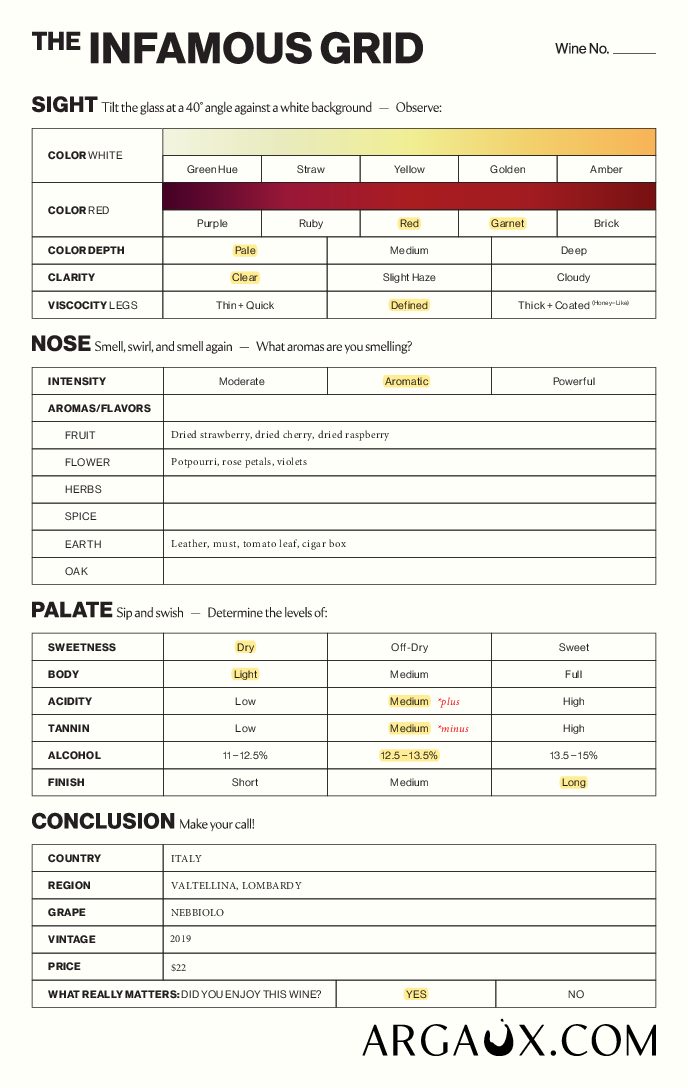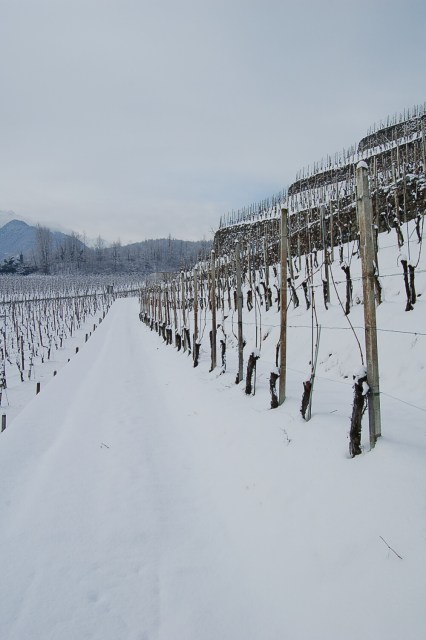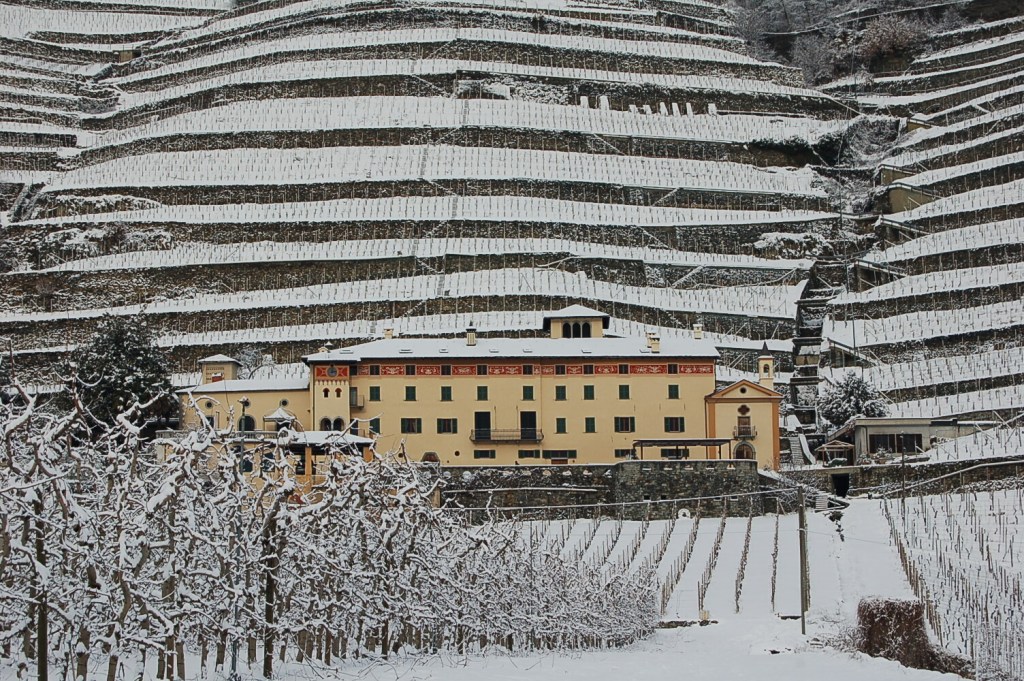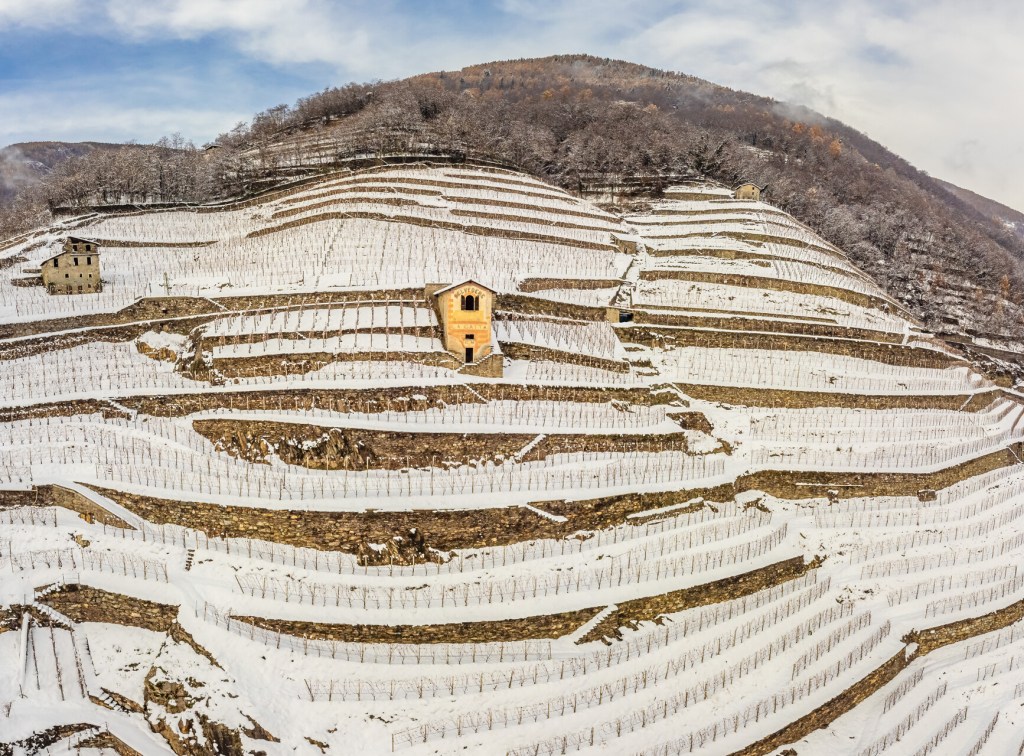2019 Casa Vinicola Triacca ‘Gaux Dopo’ Nebbiolo
This Alpine Nebbiolo is energetic, zippy, and remarkably fresh. The stainless steel fermentation maintains the wine’s bright fruit character, floral quality, and natural suppleness.
Sustainable farming practices and only 100 cases produced!
$22.00
Out of stock
Pairs with
The “La Gatta” estate was originally built in the 1500s as a Dominican monastery and was later purchased as a summer home for the aristocratic de Gatti family, from which the name derives. The Triacca family acquired the old monastery in 1969, which is surrounded by 13 hectares of vigorous vines grown on the steep hillsides of the Italian Alps. In 1987, Domenico Triacca acquired 2,000 square meters of vineyards in Valgella, one of the most highly sought after vineyard areas in Valtellina and built himself a small cellar to start producing and aging wines from his own vineyards. Today, Lucca Triacca runs the estate and is known as one of the most innovative Valtellina producers.
Valtellina lies in an Alpine valley in the northern part of the country in the Lombardy region. It actually forms part of the border between Italy and Switzerland and historically has been Swiss and Austrian territory before becoming part of Italy in 1859. The area benefits from a cool, mountain climate, though ‘La Breva,’ a gentle wind that originates over Lake Como, moves warm air into the valley and helps promote pollination in the spring. The vineyards lie on extremely steep slopes and tiny terraces (similar to the Mosel or Alto Adige) requiring it all to be worked by hand. Some suggest that Nebbiolo may have even originated in Valtellina! Today, it is known for its bright, cherry-scented Nebbiolo, known here as Chiavennasca (after the nearby town of Chiavenna).
“Nebbiolo from Valtellina has always been one of my favorite expressions of this grape. It’s Alpine wine; a much lighter and fresher version of your typical Nebbiolo from Piedmont that you might be more familiar with. They are high acid, food-friendly wines that are often significantly more affordable than your average Barolo. These wines are great with good company, a cheese & charcuterie plate, and some light pasta.” – Lexi Jones, Director of Imports
Related Items
-
2022 Chateau du Cèdre Cahors AOC Malbec
$35.00When you see Malbec, you probably think Argentina. However, the Malbec grape is actually native to Cahors and the French expression of this grape is deep, earthy and structured. It’s a total 180 from the common, fruit bomb Malbecs that line the shelves today. Next time you make a burger, pop this guy instead of your typical Cab.
Certified organic farming practices, hand-harvested, aged for 20-22 months in new oak and bottled unfined and unfiltered.
-
2022 Peay Pinot Noir ‘Savoy Vineyard’ Anderson Valley
$95.00Savoy Vineyard in the Anderson Valley is considered one of the best vineyards in all of California for Pinot Noir. It’s highly-regarded for producing classic Pinot Noir with a touch of influence from the Pacific Northwest. Think California fruit mixed with Oregon’s rustic concentration.
Organic farming practices, woman-winemaker.
-
2023 Raul Perez Atalier “A Cruz das Animas” Rias Baixas Albariño
$44.00Atalier is the exciting new Rías Baixas Albariño project from the redoubtable Raúl Pérez, and this wine is nothing short of explosive. It leaps out of the glass with aromas of oyster shell and etherized granite and follows through with a palate rich in marine-inflected yellow and green fruits and sporting a powerful surge of acidity.
Fermented and aged in large, neutral French oak foudres. The oxygenation that occurs during this élevage gives the wine a softer, rounder entry that balances out the razor-sharp acidity. Biodynamic and organic.
-
2022 Ben Haines Yarra Yarra Valley Red Blend
$35.00A blend of fruit from the Pyrenees, Grampians and Yarra Valley – this is the perfect “lighter” red for winter. Savory, spicy and vibrant this food-friendly wine will pair nicely with roasted veggie dishes, pork, or lamb gyros.
Organic/Biodynamic farming practices, family-owned, hand-harvested, native yeast fermentation, unfined/unfiltered and only 600 cased produced.












